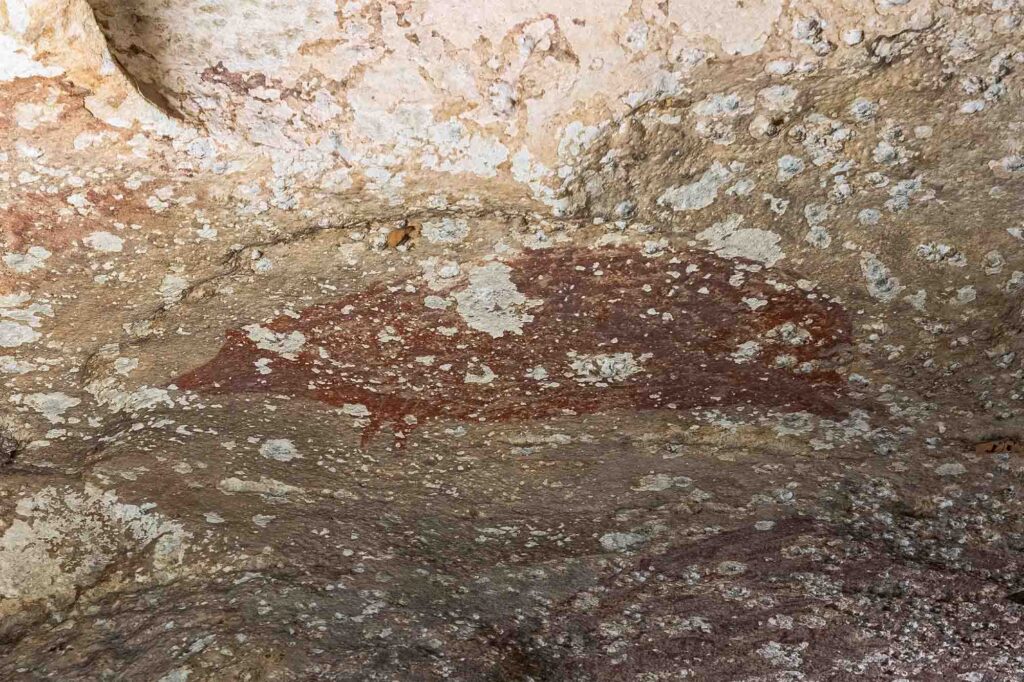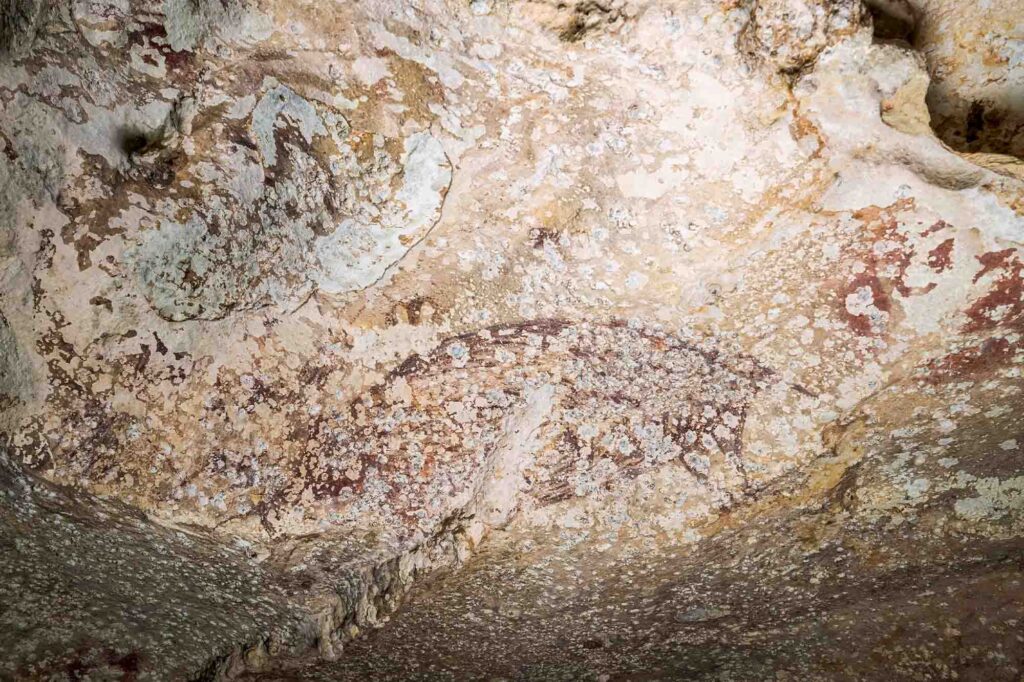- Cave art depicting humans and pigs was discovered on Indonesian island of Sulawesi
- The drawings are believed to be more than 51,000 years old
- Discovery claims to change existing ideas about human evolution

Our ideas of human evolution could change thanks to the discovery of cave art that is believed to be more than 51,000 years old.
Oldest abstract art
Australian and Indonesian scientists from the National Research and Innovation Agency in Jakarta have discovered the cave art, which depicts humans and a wild pig, on the Indonesian island of Sulawesi. The painting is believed to be the oldest example of figurative art yet discovered – it is thought to be 5,000 years older than the previously believed oldest example of cave art.
The picture includes a pig with a partly open mouth, surrounded by three human-like figures. One of the figures seems to be holding a rod, another is in front of the pig and appears to be holding a stick close to the pig’s throat. The third figure looks to be upside-down, with one hand reaching towards the pig’s head.

Earlier than thought
This discovery means that humans had the capacity for creative thought and thinking in abstract terms earlier than previously thought.
While there are older examples of human-made drawings in existence, the oldest being found on rocks in the Blombos Caves in southern Africa, which are thought to be about 75,000 to 100,000 years old, they consist of geometric patterns.
But these newly discovered cave paintings, found in the limestone cave of Leang Karamopuang, show an abstract representation of the world the person, or people, who painted the scene lived in. It gives an idea of when the thought processes evolved in humans that were to become art and science.